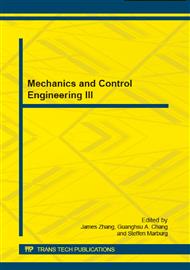p.190
p.195
p.199
p.204
p.211
p.215
p.219
p.227
p.233
Parameters Identification and Simulation of Equivalent Circuit Model of Lead-Acid Battery
Abstract:
As a complex system, lead-acid batteries are affected by a number of factors, most of the lead-acid battery equivalent circuit models contain a large number of parameters, and the validity and accuracy of the models have a great relationship with the values of these parameters. Therefore, the parameter identification is a very important job of the modeling work. In this paper, we use the 7-HK-182 lead-acid battery for the study, doing charging and discharging experiments of this lead-acid battery, establish an equivalent circuit model, and identifying the parameters of this model, at last, through the simulation, we determine the accuracy of the parameters identification of the equivalent circuit model.
Info:
Periodical:
Pages:
211-214
Citation:
Online since:
December 2014
Authors:
Price:
Сopyright:
© 2015 Trans Tech Publications Ltd. All Rights Reserved
Share:
Citation:


